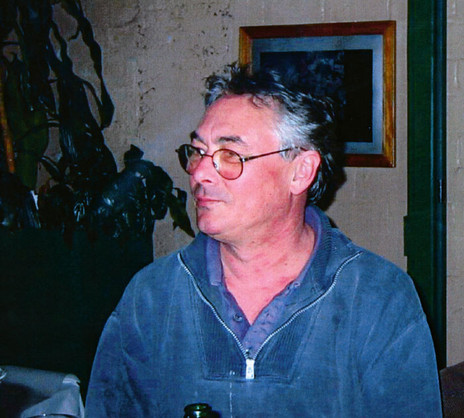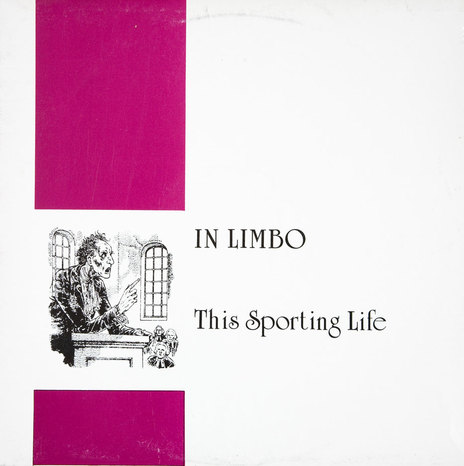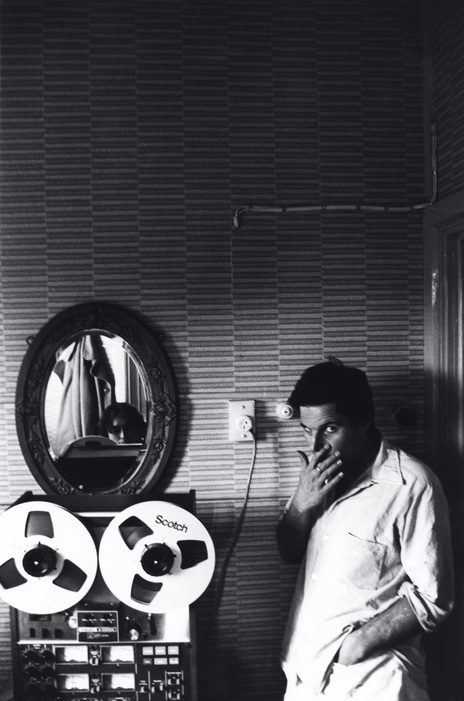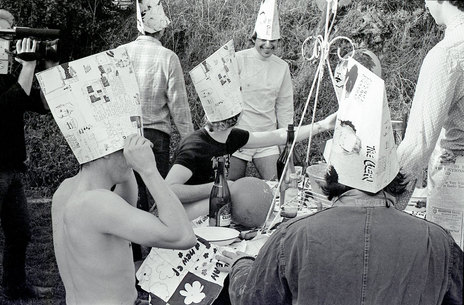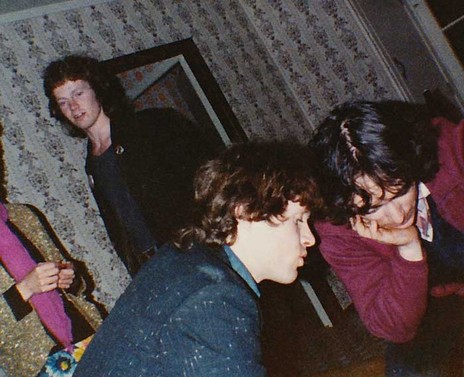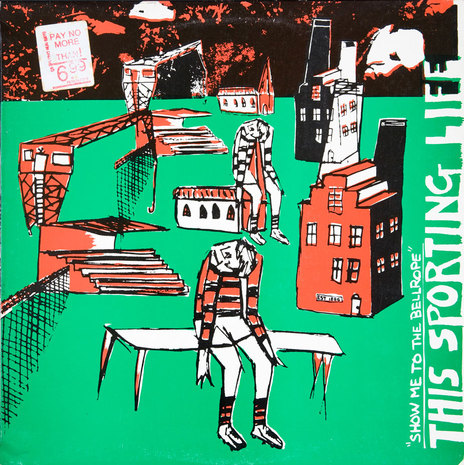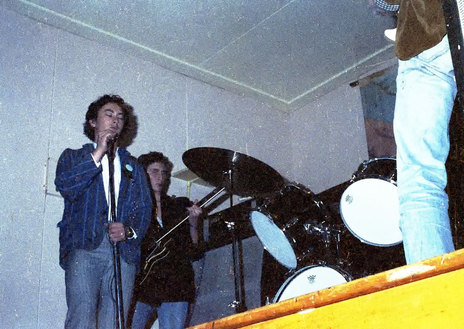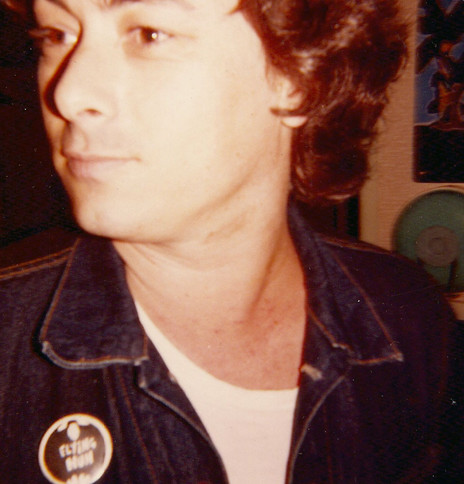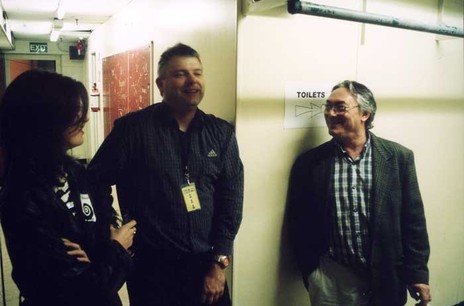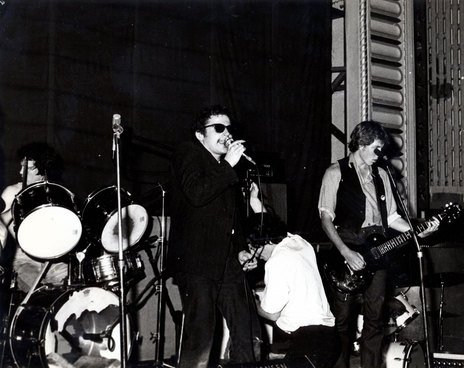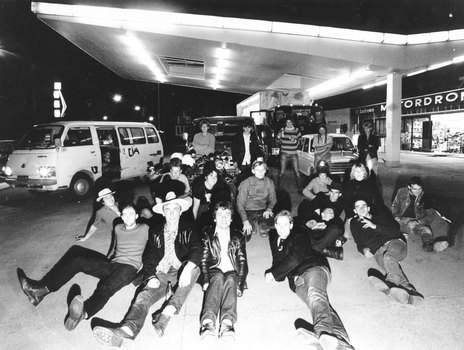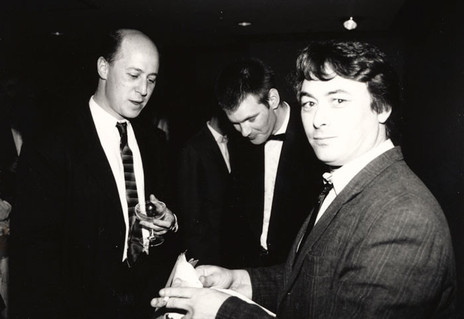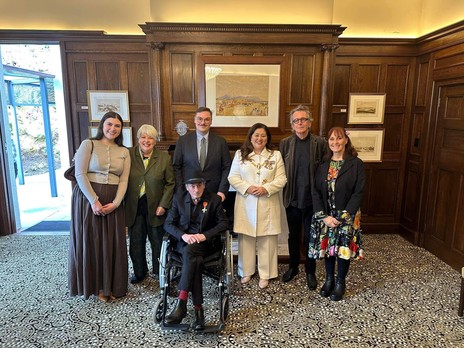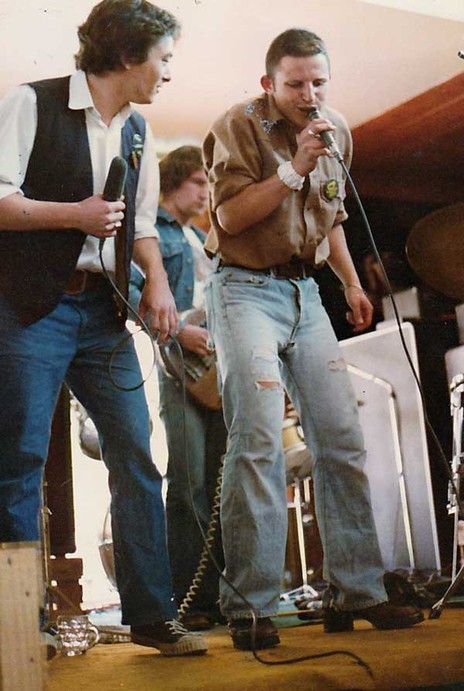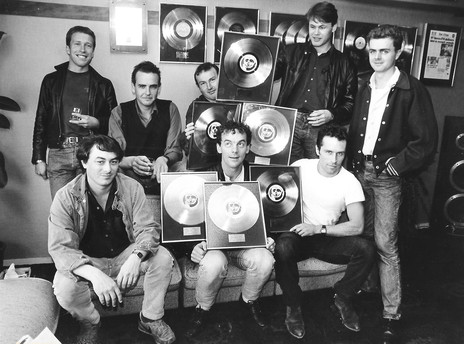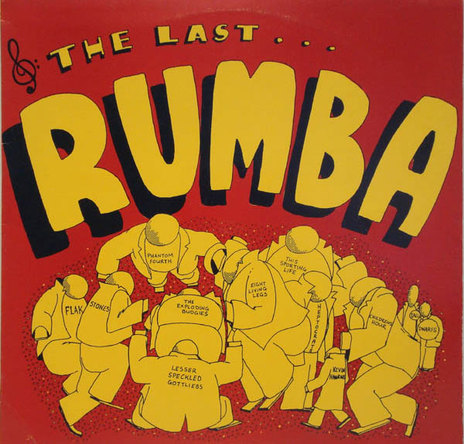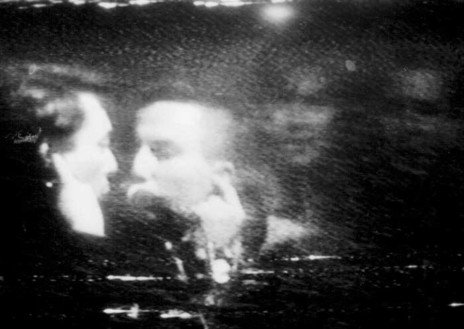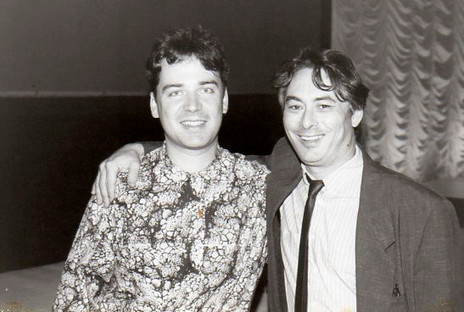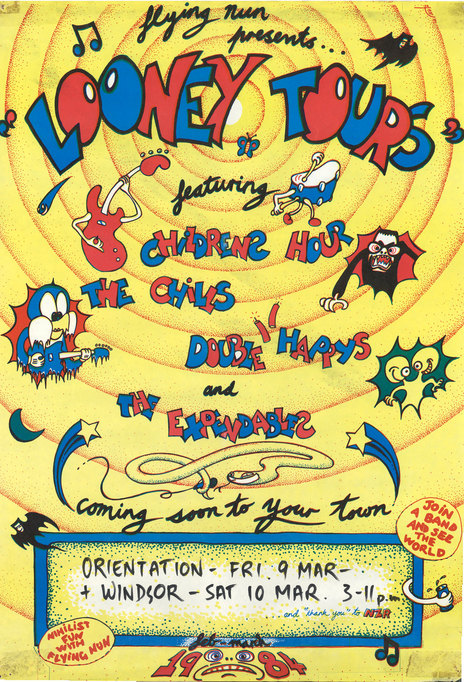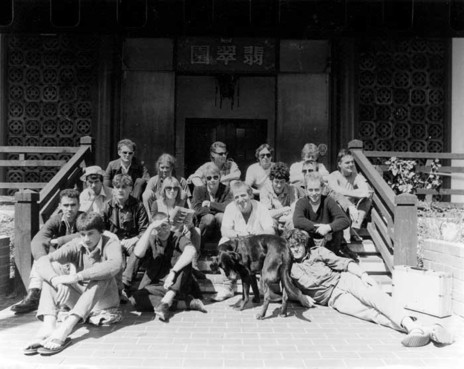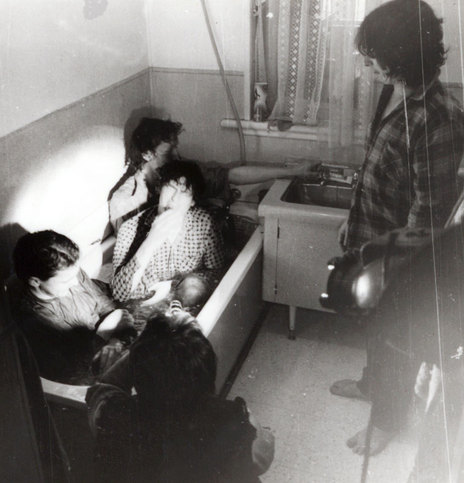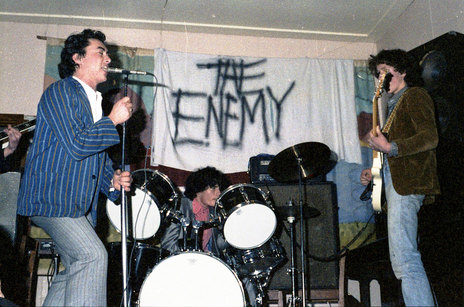After a short stint back up North in his King Country home town, Te Kuiti, Hood tossed in his university engineering intermediate, and returned to the South Island, this time working in Central Otago, where a second Sargent brother, Kevin, had landed.
It was a short step from there to Dunedin and Chris Knox’s North East Valley flat. Hood took up work in the city as a technician with the Post Office, a sprawling government department responsible for telecommunications, banking services, mail delivery and the infrastructure that supported them. It was a set of skills and inclinations that would hold him in good stead when Knox’s punk and post-punk groups The Enemy and Toy Love became active from 1978 and 1980.
Dunedin was a lively and cheap place to live in those lost 1970s days. “It was a very social place with all the parties and gigs,” Hood recalls. “You’d go to the [Captain Cook] and as soon as the Cook closed down, you’d just start following the crowds of people around the streets, Albany Street, all around the student village area, going from party to party.”
The music fan in him had to make do with local covers bands like Stash, who could knock out the likes of David Bowie’s ‘Jean Genie’. But that wasn’t enough, and as the decade pushed on well into its second half, musical life of an altogether more original and abrasive kind sparked in the inner-city house Hood was then sharing with Knox.
Having already absorbed the more challenging sounds available, it took only the incendiary spark of punk to bring the talent at hand to life. The ever-confident Knox teamed with up with art school students Mike Dooley, a drummer, and Alec Bathgate, a guitarist, then roped his similar-aged friend Mick Dawson on bass. It was a revealing blend of the latter-day counterculture and the emerging punk scene.
Hood’s technical nous came in handy assembling and operating the PA, setting in train a sequence of events.
The Enemy were too abrasive for the local pubs that knew Knox and Hood only too well, but that didn’t stop them setting up their own shows in the nearby Beneficiaries Hall and Dowling Street practice rooms.
Hood’s technical nous came in handy assembling and operating the PA, setting in train a sequence of events that saw him eventually become Toy Love’s sound man and New Zealand manager.
But not before he’d take a crack at singing himself, in an early line-up of The Clean in Dunedin and Christchurch, where The Enemy soon ventured having heard about the Garden City punk scene at the Mollett Street venue. It was there that the group first met Paul Kean and Jane Walker, who would become Toy Love’s bassist and keyboard player.
The Enemy, their songbook brimming with originals, loaded up two black vans with their gear, copious amounts of Speights (their preferred Dunedin beer), and their close allies including Doug Hood, and headed north again in late September 1978. This time Auckland was the destination, where the country’s biggest punk scene was developing.
The Dunedin band’s impact was immediate, stunning punk crowds at Auckland University Café, State Theatre, HQ Rock Café, Windsor Castle and Zwines. That was when The Enemy hit their peak, Hood believes.
A new line-up wasn’t long in arriving. With Kean and Walker on board, The Enemy re-emerged as Toy Love, who came into their own as a headliner in the burgeoning Auckland punk and post-punk scene of 1979 and early 1980.
Bolstered by a tour of the main centres in May 1979, a run through of the North Island’s population centres from August to early September 1979, and another national tour beginning in late September that included a two week stay crammed with shows in Wellington, Toy Love spat sparks and made converts with their confrontational live act and full set of quality originals.
A hit single in August 1979 with ‘Rebel’ b/w ‘Squeeze’ and successful slot at the huge Sweetwaters festival near Ngāruawahia in late January 1980 signalled better things ahead for Toy Love and their manager and sound man Doug Hood. With England in their sights, they settled for Sydney in Australia, and a record deal with Deluxe, a label owned by Michael Browning, who also took over the role of manager.
Doug Hood felt it was a mistake, but he went anyway and was soon dismayed by the small crowds the group often encountered after their arrival in Australia, in March 1980. Melbourne was better, but Toy Love’s stay there was brief.
With a new album recorded, the band and entourage packed up and returned to New Zealand in August 1980 for a two-month national tour. Despite the album’s chart success in New Zealand and a third hit single with ‘Bride of Frankenstein’, the group was shot and split for good at the end of the tour.
Hood headed home to Te Kuiti for a spell, then it was back to Auckland to work as a sound man for Paul Crowther’s Live Sound, a PA and lighting rental company, based in Grey Lynn, that also ran the PA at the Windsor Castle venue in Parnell.
The Toy Love personnel retreated and things went quiet for a while there. It had been a hell of burst from The Enemy’s early days until their premature end – two years of frenetic activity.
The next time New Zealand indie fans saw the names Knox, Bathgate and Hood, they’d be attached to an oddball hit single, the former pair released as Tall Dwarfs on new Auckland indie label Furtive Records in August 1981.
‘Nothing’s Going To Happen’ was home recorded on a 4-track TEAC machine, and coupled with a similarly spirited Chris Knox video, it heralded a new surge of musical and creative activity in New Zealand that would find fuller expression on Roger Shepherd’s Flying Nun Records, a small Christchurch indie label.
Flying Nun’s early run of singles and EPs were often recorded on that trusty 4-track.
Flying Nun’s early run of singles and EPs were often recorded on that trusty 4-track. “Chris got some money from his Grandma – $400 – and bought a 4-track,” Hood told the bFM Extended Play: The Classic Flying Nun EPs radio documentary in 2012. “It was what The Beatles used. It [the 4-track] was sitting on the floor and none of us really knew what to do with it. It was literally just the microphone plugged in and off you’d go, there was no mixing, straight into the four track.”
Doug Hood then joined Steve Kennedy at Harlequin Studios and lent an ear to the recording of The Androidss’ solitary new wave gem ‘Getting Jumpy’ backed with era anthem ‘Auckland Tonight’ for indie label Ripper Records. “That was a lot of fun,” he remembers.
‘Auckland Tonight’ climbed to No.19 on the national singles chart in November 1981, testament to a hungry market for local indie records and The Androidss busy live schedule.
That same month, a five-song EP produced by Hood with Chris Knox shot up the pop charts to No.5, beginning a half-year stay. It was The Clean’s Boodle Boodle Boodle, one of the most influential records ever be released in New Zealand.
Three records. Three chart hits. In 1982 Hood was involved in three more with The Chills’ ‘Rolling Moon’, and The Clean’s Great Sounds Great EP and ‘Getting Older’ single. These were part of a greater body of music recorded that year on Knox’s humble TEAC 4-track that included the Dunedin Double compilation of Sneaky Feelings, The Stones, The Verlaines and The Chills, and Christchurch’s Mainly Spaniards.
Hood found time to record The Verlaines and Sneaky Feelings’ first singles ‘Death And The Maiden’ and ‘Be My Friend’ and early takes on The Chills’ ‘Pink Frost’ at The Lab studio, released in 1983 and 1984 respectively. The latter was yet another chart hit.
He was there with Terry King and Chris Knox at Progressive Studios when The Builders taped their epic Beatin Hearts album. He returned at the end of 1982 with King to help Dunedin’s The Stones capture their first EP, Another Disc Another Dollar (No.33 in mid-1983).
On his own, Hood recorded an extended single for Queen City power-pop trio Prime Movers for Furtive Records at The Lab studio, and a mini album for The Fall-loving This Sporting Life. Live takes on The Chills’ ‘Flamethrower’ and The Clean’s ‘Two Fat Sisters’ and ‘Happy Birthday John’ – recorded by Hood at Auckland’s Rumba Bar on 15 May 1982 –made vinyl as the flipside of ‘Rolling Moon’ (1982) and on the Live Dead Clean EP in 1986.
Hood went one better with Auckland punks No Tag, recording their entire live set to tape at Auckland’s Reverb Room on 22 and 23 October 1982. Released in March 1983 on Propeller Records, Can We Get Away With It? slipped into the lower reaches of the national album chart just as No Tag toured New Zealand with Doug Hood doing their sound.
1983 saw Hood’s ears and hands shift to a broader set of post-punk sounds as he captured the music of They Were Expendable (Big Strain EP), Eight Living Legs, Flak and Y.F.C (Between Two Thieves EP) with Terry King at Progressive. The canny pair also recorded The Last Rumba collection of left field acts at the Rumba Bar on 6 June 1982 for release on Flying Nun Records.
By then, Hood had taken on the management and sound production of Children’s Hour, producing their ominous Flesh EP. Hood’s musical ear had always pricked more readily for darker and harder music rather than what became known as the Dunedin Sound. Children’s Hour kept him busy through 1983 and into 1984 by playing often in Auckland and touring the other population centres.
Hood’s studio productions fell off in 1984, although every song he recorded that year became a chart hit. The Chills and Hood gave ‘Pink Frost’ a final mix and added ‘Purple Girl’ in January. He also lent his ear to their ‘Doledrums b/w ‘Hidden Bay’ single and the four-part ‘Dream By Dream’ that would appear on The Lost EP, and to The Verlaines’ frenetically tuneful 10 O’clock In The Afternoon EP.
But that was largely it for Doug Hood, studio producer. While lesser talents with fewer hits would have forged a career around that timeless run of records, the ever-busy Hood focused on promoting and producing a series of concerts that would be just as important to the development of New Zealand’s post-punk scene.
He had long since taken on the booking as well as the sound production at the Windsor Castle (he also did sound at the Gluepot) where his South Island music links came in especially handy.
Every post-punk New Zealand group who had a decent record or tape out played the Parnell pub venue from late 1983 until late 1986 under Hood’s aegis, a long list that points to the abundance of talent and widespread cultural activity in the country in the middle of that decade.
In late 1983, The Gordons, Children’s Hour, Eight Living Legs, Bird Nest Roys, Able Tasmans, Marie & The Atom, Silent Decree, Sons In Jeopardy, Miltown Stowaways, Grocer Man Jack and Y.F.C. all checked in.
1984 brought Phantom Forth, The Gordons, Skeptics, Doublehappys, The Expendables, The Chills, Children’s Hour, Tall Dwarfs, Bird Nest Roys, Sneaky Feelings, The Verlaines, Y.F.C., The Builders, The Bats, Vibraslaps, Netherworld Dancing Toys, The Exploding Budgies, The Great Unwashed, At Last The 1978 Show, Fetus Productions, Look Blue Go Purple, The Rip, Say Yes To Apes, The Stridulators and Unrestful Movements to the Windsor Castle stage.
If they were still alive and kicking, and most were, nearly all of those groups returned – often more than once – to the Windsor Castle in 1985. Flesh D-Vice, The Fold, No Idea, Goblin Mix, Not Really Anything, Armatrak, Five Year Mission, No Tag and The Remarkables joined them that year, indicating an even broader spread of sound and regional origin in New Zealand.
Every major centre and a good number of the smaller cities had a sympathetic live room and audience, creating a national circuit that took in the Pulse and Cricketers in Wellington, the DB Gladstone and Zetland in Christchurch and the Oriental Tavern and Empire Tavern in Dunedin, amongst others.
In 1986 the Human Lawnmowers, Chris Knox, Headless Chickens, The Warners, Alfalfa Louts, Battling Strings, Insect, Martin Phillipps, The Pterodactyls, Alpaca Brothers, Murder Inc, Skank Attack and Hyphen Ears joined those by now well-established indie groups at the Windsor.
In an early 1988 interview with Metro magazine, Hood explained that he “manages acts he likes personally, but not in a way that loses money.” Something he did for The Chills, taking the reins just after the release of their ‘Doledrums’ single.
Hood had helped them get onto Split Enz’s ‘Enz with A Bang’ tour, then organised and ran a extensive series of 87 shows that touched down in every town or city of size in New Zealand, often multiple times. Balclutha, Invercargill, Takaka, Ashburton, Greymouth, Wanganui, Levin and the Chateau Tongariro all heard the sound of Flying Nun’s most prominent band as they took their music out to wider New Zealand.
The Chills capped the busy run with The Whistle Stop Tour, which put enough money in the bank to fund The Chills’ first trip to England in November 1985.
“For a while we were playing virtually every second weekend to packed houses at the Windsor Castle in Parnell, and the occasional gig at the Gluepot,” wrote the former Chills keyboard player Peter Allison in his Curse of The Chills feature, published in Metro in November 1988. “We needed about $25,000, and without a big international record company to put up the money, we had to earn it the hard way: on the road. So we began touring the country (what felt like) incessantly.
“To be fair,” Allison concluded, “if it wasn’t for Doug Hood cracking the whip, we would never have got to England.”
“I think that trip set things up for the other bands later on,” Hood told Radio New Zealand in the five-part radio documentary on Flying Nun Records, first broadcast in December 2002. “But you know, it was pretty cold [laughs]. The most significant thing we did in London was recording ‘Leather Jacket’. It was actually something tangible we had from the trip apart from the few good reviews and interview. There was something about the song, it really really rocks.”
The Chills were back on New Zealand highways with a new line-up in late February 1987 for 27 shows that included the Hello Goodbye tour, before heading again for Europe and Great Britain. Home on tour in December 1987, the group narrowly avoided serious injury in an accident that put Hood in hospital.
Peter Allison: “Just before Christmas, sunny Sunday afternoon just north of Bulls heading towards Wellington, a Mack or Kenworth … headed across the road into The Chills’ Mitsubishi Chariot rental six seater with Doug Hood driving, and Caroline, Alan (boyfriend), Craig Taylor and Martin Phillipps in it.”
“It was a Mack or Kenworth,” Hood told Allison. “It had a bald tyre which blew out a hundred yards in front of us and it just came BOOMPH! Right in front of us and we hit the front of the truck and ran right down its tray.”
“The impact smashed Hood’s knee against the steering column and lifted his kneecap at a very unnatural angle,” Allison wrote. “He spent a couple of days in Wanganui Hospital while they jammed it back and sewed his knee up. He also took a blow to the head and a cut lip. No one else had a scratch.”
“It’s more the curse of rock’n’roll than the curse of The Chills. When you do as much travelling as we do in this business, the odds are really stacked that sooner or later you’re going to have a serious accident – whether it’s a plane crash or getting run over in the streets of London. It’s an occupational hazard the same way it is for commercial travellers, or anybody that’s on the road,” the ever-practical Hood told Allison.
He should know: since 1982 Hood had been touring like-minded contemporary overseas groups and illustrious and often previously unseen musical forebears through New Zealand under the Looney Tours banner, and he continued touring the increasingly successful Chills into the early 1990s. The added bonus being that many of the acts he put on at the Windsor Castle could now step onto bigger stages as support groups as The Chills often did.
Picking up the 1980s New Zealand tours of post-punk innovators The Birthday Party, The Fall, John Cooper Clarke, New Order, Violent Femmes and Hunters and Collectors from Ken West and Vivian Lees of Australian promoters Edward Zimblis and Co. early on, Hood soon found he’d added another string to his bow.
A deal was soon sorted that left Hood in charge of an international act for the first time.
It all began simply enough. West was on the phone to Chris Knox, who was doing a piece on The Fall for Rip It Up, and asked about promoters in New Zealand. “Ring back in a minute,” Knox said, and turned to his friend, Doug Hood. A deal was soon sorted that left Hood in charge of an international act for the first time.
If you went to a big show in New Zealand by an overseas cutting edge group over the following 12 years, chances are Doug Hood promoted it as Edward Zimbalis and Co became West + Lees.
Saving Music From The Mainstream and The Boring was how Auckland magazine Metro put it in March 1985. Illustrated by a photo of Hood with a ciggy and a glass of spirits in hand, the promoter flicked away interviews as being only about those who blow their trumpets. He didn’t want to get razzed by the lads. Hood was all “jeans, tee shirt, let’s get the job done,” as writer Peter White put it.
Up until then, the biggest tour he handled was Lou Reed in January 1985. In the following years, he shepherded multiple tours by Hoodoo Gurus, Hunters and Collectors and The Go Betweens, his favourite overseas group, along with return tours by New Order and John Cooper Clarke, and one offs by The Flaming Groovies, The Residents, The Cramps, Died Pretty, Billy Bragg, The Pogues, The Damned, Jesus and Mary Chain and Tav Falco. A favoured form of promotion, Hood told AudioCulture in late May 2016, was dropping 50 complimentary tickets off to radio stations like Campus Radio (later bFM) in Auckland.
Metro caught up with him again in June 1988 for a piece by Bryan Staff on freelancers, titled Living For The Answerphone. Hood wore a Billy Bragg T-shirt this time and had a cool Bragg anecdote to share about the punk-ish and political left wing singer-songwriter: “When Billy Bragg came to Auckland I had a call from the Prime Minister’s secretary to say Mr [David] Lange was interested in coming. Billy was so excited he rang his mum. What surprised me was that Mr Lange came for the whole show, opening act and all. Billy even gave him a pile of autographed albums to take home.”
Hood’s biggest show up to that point was modern blues man Robert Cray. “Nico on the other hand was my biggest disaster – especially in Wellington. I would have thought there would be more ex-junkies down there than there obviously were,” Hood wryly observed.
Soon afterwards, he was on the panel that awarded the Rheineck Rock Award for recording an album to Headless Chickens. A controversial choice, it proved prescient as the group forged on to success with ‘Cruise Control’ in Australia and ‘George’ at home in the following years. Hood had already proved he knew a left-field hit group when he heard one.
Tours by Sonic Youth, PiL, Dinosaur Jnr, The Buzzcocks, Violent Femmes, Jonathan Richman, The Cramps, Mudhoney, Butthole Surfers, The Lemonheads, Bob Mould, Fugazi, Nick Cave and The Bad Seeds, Iggy Pop and Pavement followed until Looney Tours was wound up by the Inland Revenue Department in 1994.
Along the way, Doug Hood got to hear New Order’s ‘Blue Monday’ before it was pressed to record, when the group had the early mixes couriered to New Zealand before their gig in December 1982. His were also the first local ears exposed to Nirvana’s newly mastered breakout album, Nevermind, as he recalled to Gavin Bertram in Volume in September 2011.
“He said ‘I’m going to play you a tape - listen to this’. It was the sound that was the thing that stuck. It wasn’t the songs, it was the production, and the ginormous sound. It was extraordinary. We [Hood and Australian promoter Steve Pavlovic] drove up to the top of Mt Eden and listened to it.”
When he toured Nirvana in early February 1992 at the height of their early fame, Hood encountered a familiar problem. Bands with certain predilections would turn up in New Zealand “sick” after their needs had been more than sated in Australia. He preferred The 3Ds that night anyway. The Dunedin quartet was a Hood favourite and a group he believes many overseas bands took their cues from.
The arrival in New Zealand of the massive one-day summer festival, Big Day Out from February 1994, kept Hood busy. It’s hard not to see the successful festival, which put New Zealand’s best groups and performers onstage alongside happening overseas acts and resurgent heritage performers, as a culmination of everything he’d worked for over the previous decade and a half. The community that was always at heart of everything he did was huge now, and the worth of challenging music was established beyond doubt in New Zealand.
As the AudioCulture interview winds down, Hood says he still keeps in contact with Flying Nun Records. He’s off next week to the book launch for Roger Shepherd’s memoir, In Love With These Times, at the label’s shop and offices in Auckland’s inner-city Pitt Street.
Some barely noticeable facial reconfiguring aside, you’d never guess Hood had a stroke in mid-2015. “Chris [Knox] and I are the guys with the brains that never died,” he says, in parting, slyly referencing his old friend’s illness and the classic Tall Dwarfs song.
On 5 June 2023 Douglas Henry Hood became Officer of the New Zealand Order of Merit for services to the music industry.
--
Doug Hood, one of the great champions of New Zealand music, a man who led by example, passed away from cancer on 10 September 2024
